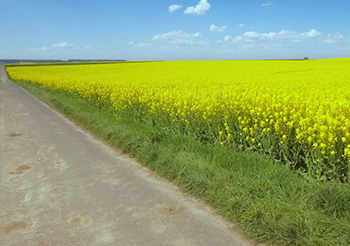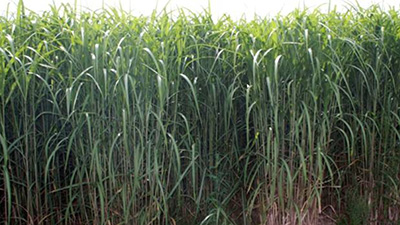
Study of the history of the biofuel industry formation in EU enabled to make an evaluation of the potential of agricultural resources for biofuel production on the example of Germany.
In modern economic conditions one of the main tasks set to biofuel industry is to evaluate the effectiveness of biofuel application in transport sector to solve the ecologic problems of the country. The calculation results of hypothetically free agricultural lands enabled to estimate the possible scopes of production of liquid biofuel and calculate the reduction degree of greenhouse gas emissions. Using the data on the potential scope of biofuel production, in case of reaching the level of its consumption as 19%, Germany is able to reduce greenhouse gas emissions by 8-9% from the current level.
Further stage in perspectives evaluation of biofuel production in Germany with application of mathematical modeling tools (the method of building fuzzy classifications) led to map composition at the level of administrative regions with the identification of their three homogeneous groups by the perspectives for the development of biofuel industry. These groups were singled out on the basis of the conjoint analysis of disparate indicators: socioeconomic, ecological and hydroclimatic, which enabled to determine the optimality degree of spatial combinations of these indicators for the development of biofuel industry. The groups were identified with high, low and medium degree of favorableness.
Biofuel industry in Germany, scenarios of support
In the field of biofuel use among the European countries, Germany has made significant progress, which has become not just a regional leader in production scopes, but also created a model for the development of biofuel industry. Germany acts as a "locomotive" for the rest EU countries. It is forecasted that by 2020 the share of renewable energy in the country's transport sector will reach at least 13.2%. To accomplish this task, the German government has several scenarios for supporting the branch, the selection of which will influence not only the development of biofuel industry, but also the related sectors of the economy, especially the agro-industrial complex.
The first scenario assumes that the main types of liquid biofuel will remain biodiesel and bioethanol. In this case the need will occur either to significantly expand the plowed areas, or to reorient the existing ones for the cultivation of energy crops. The second scenario assumes that the required amount of liquid biofuel will be imported into Germany as final products or raw materials for further processing and production of its own biodiesel or bioethanol based on it. The third scenario assumes that the technologies for production of second generation biofuel will allow using a wider range of biomass, including straw, waste from agriculture and forestry, organic components of municipal waste, special cellulose-containing energy crops, thereby increasing the hypothetically possible scopes of biofuel production for transport sector.
The study of modern structure of biofuel production in Germany enabled identifying geographic patterns in the location of enterprises, estimating production costs in the prime cost system of biofuels production and determining perspective locations for the new plants construction by calculating hypothetically free agricultural lands.

The analysis of production costs, taking into account government support in the form of tax benefits or subsidies, shows that agricultural raw materials compose the largest part in the prime cost of biofuel. The cost of rapeseed oil as the main energy crop of Germany, in average makes more than a half of the final price of the product in the structure of production costs. Other production factors are attendant, allowing optimizing the structure of production costs.
The evaluation of the territorial structure of biofuel industry in Germany revealed a relatively high degree of plants concentration in the eastern part of the country and a relatively low one - in the western and southern parts.
Several factors can be noted that determine the current specifics in the location of biofuel production. First, as a result of the reunification of West and East Germany, commodity agriculture in the territory of the eastern federal lands has become less competitive, and in some areas - completely unprofitable. As a result, large areas of agricultural land were eliminated from crop rotation. This situation resulted in the beginning of the cultivation of energy crops on these lands for biofuel production. Secondly, in order to improve the social and economic situation and bring the region's agriculture to a new level, the subsidies for bioenergy development, including biofuel, have been allocated.
The study of the spatial development factors of German biofuel industry enabled distinguishing of two stages. The first stage, when the industry was born in the late XX century and the first half of the 2000s, was determined mainly by the consumer factor in the location of biofuel plants.

However, the rapid expansion of biofuel industry was accompanied by an increase in the consumption of agricultural raw materials, which forced the companies to start building the plants in the areas where the raw materials were growing. The beginning of this process has become the second stage in the development of the country's biofuel industry, where the influence of the commodity factor on decision-making by companies regarding the choice of biofuel plants location, can be called as its distinctive feature.
The other side of the development process of biofuel industry in Germany was the change in the structure of the sown areas in the eastern federal lands. This resulted in quick raise of the density of rapeseed areas there, and on the territories of Mecklenburg-Western Pomerania, Brandenburg, Saxony-Anhalt lands the agricultural area of the so-called "rapeseed belt of Germany" was formed which specializes in the cultivation of rape as an energy crop.
